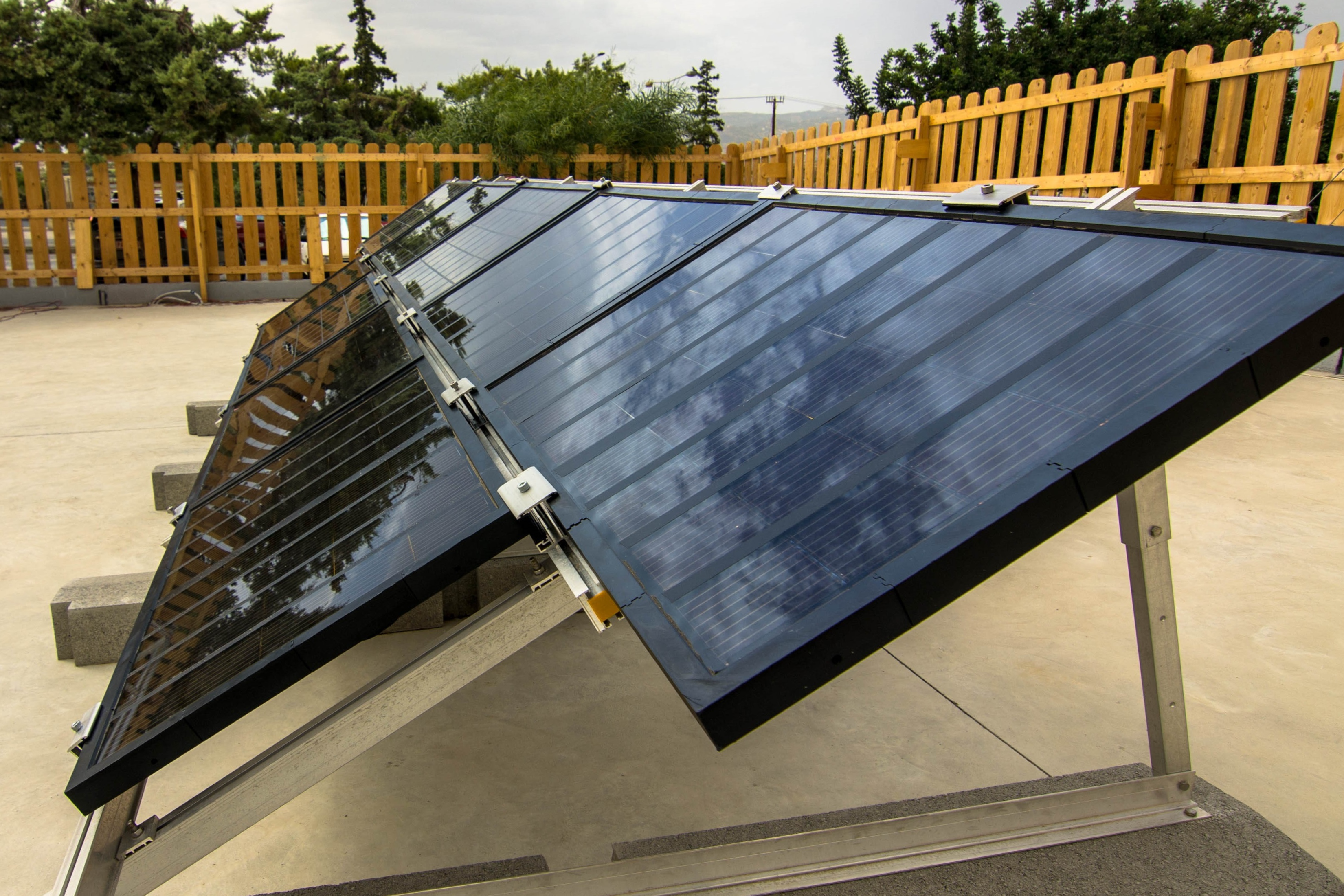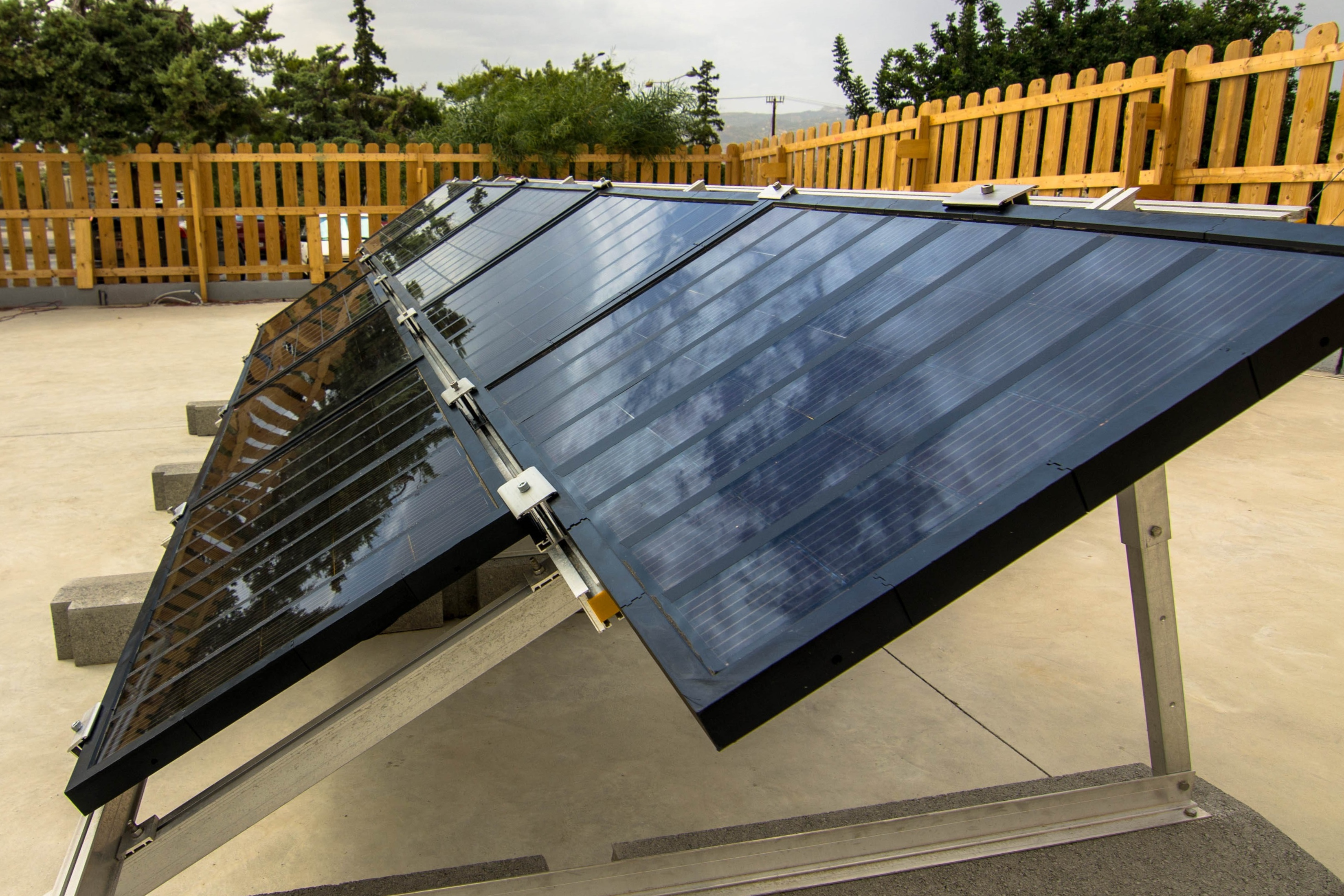Solar-Farm Test of Perovskite Cells Reveals Crucial Flaw
Perovskite solar cells (PSCs) could revolutionize the solar-energy industry, as their manufacturing cost is low and their power conversion efficiency is on par with existing commercial offerings. Yet, despite these credentials, PSCs have struggled to move out of the lab and into solar farms. One limiting factor of the technology is the ease with which PSCs can be environmentally degraded, as shown in lab tests. This property drastically reduces their operational lifetimes. Now Aldo Di Carlo of the Tor Vergata University of Rome and colleagues have studied the lifecycle of PSCs in a real-world setting using the first-ever, stand-alone PSC solar farm [1]. The solar cells performed well for nine months before they suddenly failed because of problems with each cell’s encasing box. The results provide a road map toward improving the technology, bringing PSCs a step closer to commercialization.
Researchers have long known of the problems with PSCs and have been working to build resilience into the technology. Studies show that degradation can occur when ions migrate between the layers in a cell, one factor that reduces cell lifetimes. Including 2D materials such as graphene in a PSC has been shown to mitigate these effects, and the material has already been used to extend PSC lifetimes from a few minutes to many months. Researchers have also found that adding graphene flakes to a cell can notably increase its energy conversion.
To study the full impact of adding in graphene, Di Carlo and colleagues constructed nine graphene-perovskite cell panels. Each cell had a nine-layer structure, including a sheet of perovskite and sheets of graphene-doped titanium dioxide. The layers were encased in films of gold, a conducting material called poly(triaryl amine), and fluorine-doped tin oxide. The structure was then encased in a glass-topped box using an encapsulant called ethylene-vinyl acetate (EVA). The surface area of each resulting panel was 0.5 m2.
The panels were set up in two parallel rows on a site at the Hellenic Mediterranean University campus on the island of Crete in Greece, and their electricity was used to power one of the university’s labs. This site has an annual average solar irradiance of 1990 kilowatt hours per square meter (for reference, towns in the US Southwest experience an annual average irradiance of just over 2000 kilowatt hours per square meter). In addition to the panels, this mini solar farm was outfitted with a maximum power point tracker—a device that extracted the maximum electric power output of the farm—and a weather station to monitor the environmental conditions.
The team began monitoring the solar farm on June 10, 2020, taking measurements at least twice a week. For the first nine months, they measured the maximum power of the farm to be 267 watts. But on March 2, 2021, the farm’s power-generation ability suddenly declined. Analysis of the cells shows that this failure was caused by the presence of oxygen and moisture within each panel, which physically damaged its various layers.
Di Carlo and his colleagues think that the oxygen and moisture entered the panels through gaps that developed in their encasing boxes. These gaps opened the panels’ interior layers to the elements. The team believes this failure occurred because of heating effects: the data show that the cells had prolonged exposure to temperatures of 158 °F (70 °C), which is not far from the temperature at which EVA deteriorates.
The findings “present a set of rigorous tests of a novel solar-cell technology,” says Mark Jacobson, a professor of civil and environmental engineering at Stanford University whose work focuses on renewable-energy technologies, including solar cells. Despite the ultimate failure of these cells, Jacobson believes the results are still an important step toward commercializing PSC technology. He notes that whether a particular photovoltaic technology is adopted depends on many factors, including cell efficiency. “This work will likely contribute to the continued decrease in cost of solar photovoltaic panels,” he says.
Di Carlo and his colleagues are now looking into other ways to enclose their graphene-perovskite cell so that the panels can withstand temperatures of up to 248 °F (120 °C), which is well above expected operating conditions. With this modification, the team hopes their panels will show improved performance in real-world conditions. “We’ve shown that graphene…can be used to improve cell characteristics not only for laboratory cells but also for real panels that are used in solar farms,” Di Carlo says. Now he says they just need to make the lifetime long enough to fit commercial applications, which he hopes will happen in the next three to five years.
–Sarah Wells
Sarah Wells is an independent science journalist based outside of Washington, DC.
References
- S. Pescetelli et al., “Integration of two-dimensional materials-based perovskite solar panels into a stand-alone solar farm,” Nat. Energy (2022).





